Feature Publication Archive
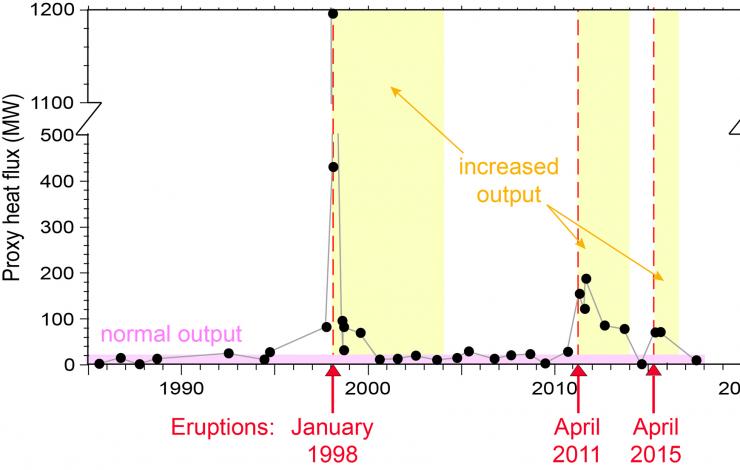
Estimates of hydrothermal heat flux (MW) for the 33-year time series (black dots; note break on the vertical axis). Pink band at bottom shows "normal" heat flux averaging ~15 MW. Yellow bands show intervals of increased heat flux following eruptions (red triangles and dashed lines), which reached values as high as 1200 MW. About two-thirds of the total heat flux occurred during the 10 years shown by the yellow bands.
Baker, E.T., S.L. Walker, W.W. Chadwick, Jr., D.A. Butterfield, N.J. Buck, and J.A. Resing (2019): Post-eruption enhancement of hydrothermal activity: A 33-year, multi-eruption time series at Axial Seamount (Juan de Fuca Ridge). Geochem. Geophys. Geosyst., 20(2), 814−828, https://doi.org/10.1029/2018GC007802.
About 80% of volcanic activity on Earth occurs on the deep seafloor of the global ocean. These eruptions are concentrated where the Earth’s tectonic plates collide or separate, accelerating the transfer of heat, chemicals, and microbes from the crust to the ocean through hydrothermal venting (the discharge of high-temperature fluids heated within the Earth’s crust) from the seafloor. A primary obstacle to the advancement of our knowledge of submarine eruptions is that most are undetected by conventional monitoring methods.
In 2015, the National Science Foundation’s Ocean... more »
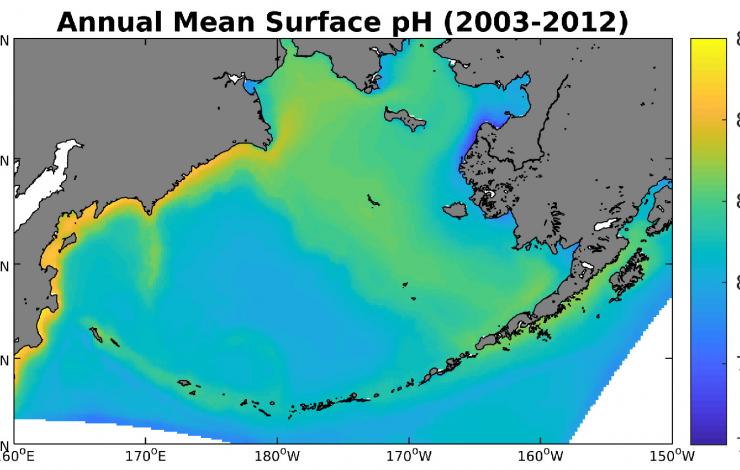
Modeled annual mean surface pH over the 2003-12 timeframe. Cooler colors indicate corrosive, low pH water while warmer colors indicate relatively buffered, high pH water
Pilcher, D.J., D.M. Naiman, J.N. Cross, A.J. Hermann, S.A. Siedlecki, G.A. Gibson, and J.T. Mathis (2019): Modeled effect of coastal biogeochemical processes, climate variability, and ocean acidification on aragonite saturation state in the Bering Sea. Front. Mar. Sci., 5, 508, doi: 10.3389/fmars.2018.00508.
Due to naturally cold, low carbonate concentration waters, the Bering Sea is highly vulnerable to ocean acidification (OA), the process in which the absorption of human-released carbon dioxide by the oceans leads to a decrease in ocean water pH and carbonate ion concentration. Emerging evidence suggests that a number of important species in the Bering Sea (such as red king crab and Pacific cod) are vulnerable to OA due to direct (e.g., reduced growth and survival rates) and indirect (e.g., reduced food sources) effects. However, the harsh winter conditions, prevalence of sea ice, and large... more »
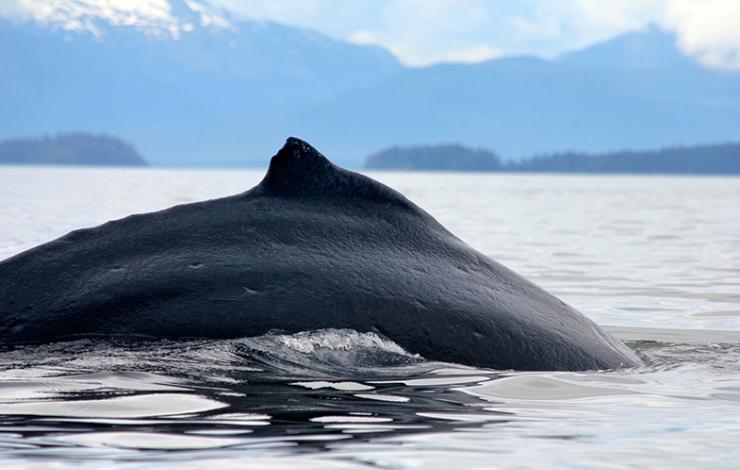
Humpback whale preparing for a foraging dive in Glacier Bay National Park and Preserve.
Fournet, M.E.H., L.P. Matthews, C.M. Gabriele, S. Haver, D.K. Mellinger, and H. Klinck (2018): Humpback whales (Megaptera novaeangliae) alter calling behavior in response to natural sounds and vessel noise. Mar. Ecol. Prog. Ser., 607, 251–268. https://doi.org/10.3354/meps12784
It’s unclear when the human fascination with the voices of humpback whales began, but with the release of the album “Songs of the Humpback Whale” in 1970, humpbacks became arguably the most listened to whales in the world. But humpback whales do more than sing: they also produce a series of vocalizations known as “calls” or “social calls”. While song is produced only by males, calls are produced by males and females of all ages, and are thought to play a critical role in the life history of humpback whales.
The modern world poses a problem for humpback whales that rely on sound; the... more »
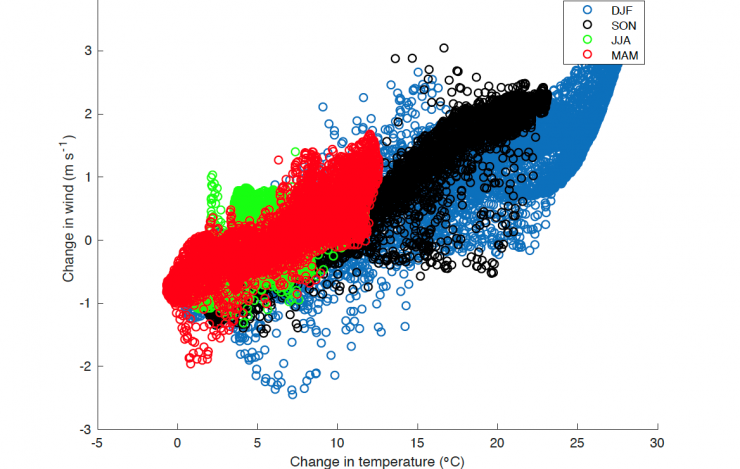
Scatterplot of changes in 10-m wind speed vs lower-atmospheric temperature change over the region north of 50°N for the four seasons: winter (DJF), fall (SON), summer (JJA), and spring (MAM).
Mioduszewski, J., S. Vavrus, and M. Wang (2018): Diminishing Arctic sea ice promotes stronger surface winds. J. Climate, 31(19), 8101–8119, doi:10.1175/JCLI-D-18-0109.1.
Projections of Arctic sea ice through the end of the 21st century indicate the likelihood of a strong reduction in ice area and thickness in all seasons, leading to a substantial thermodynamic influence on the overlying atmosphere. In this study, the authors identified patterns of wind changes in four seasons across the Arctic and their likely causal mechanisms, particularly those associated with sea ice loss.
The authors compared the outputs from the Community Earth System Model Large Ensemble Project for two... more »
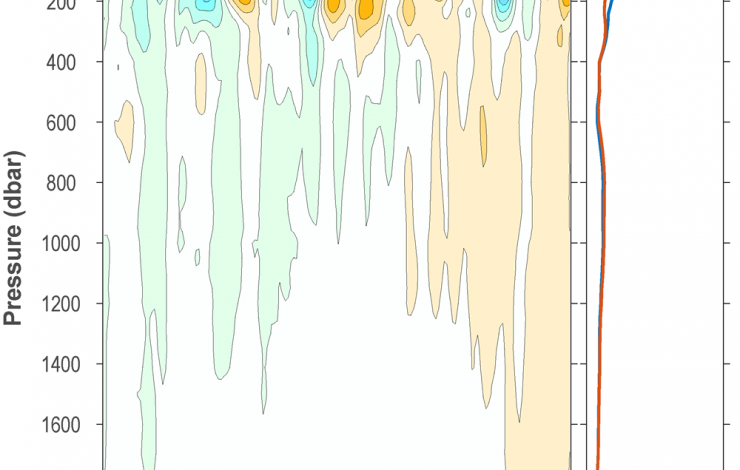
Ocean temperature anomalies. (a) Near-global integrals of ocean temperature anomalies relative to the record-length average seasonal cycle updated from Roemmich and Gilson (2009). (b) Linear trend of temperature anomalies (orange line), and trend with a Niño3.4 regression removed (blue line) following Johnson and Birnbaum (2017).
Johnson, G.C. (2018): Overview. In State of the Climate in 2017, Global Oceans. Bull. Am. Meteorol. Soc., 99(8), S69, doi: 10.1175/2018BAMSStateoftheClimate.1.
Feely, R.A., R. Wanninkhof, B.R. Carter, P. Landschützer, A.J. Sutton, and J.A. Triñanes (2018): Global ocean carbon cycle. In State of the Climate in 2017, Global Oceans. Bull. Am. Meteorol. Soc., 99(8), S96–S100.
Johnson, G.C., J.M. Lyman, T. Boyer, C.M. Domingues, J. Gilson, M. Ishii, R. Killick, D. Monselan, and S. Wijffels (2018): Ocean heat content. In State of the Climate in 2017, Global Oceans. Bull. Am. Meteorol. Soc., 99(8), S72–S77.
Johnson, G.C., J. Reagan, J.M. Lyman, T. Boyer, C. Schmid, and R. Locarnini (2018): Salinity. In State of the Climate in 2017, Global Oceans. Bull. Am. Meteorol. Soc., 99(8), S77–S81.
Overland, J., E. Hanna, I. Hanssen-Bauer, S.-J. Kim, J.E. Walsh, M. Wang, U.S. Bhatt, and R.L. Thoman (2018): Surface air temperature, in State of the Climate in 2017, The Arctic. Bull. Am. Meteorol. Soc., 99(8), S144–S146.
Timmermans, M.-L., C. Ladd, and K. Wood (2018): Sea Surface Temperature, in State of the Climate in 2017, The Arctic. Bull. Am. Meteorol. Soc., 99(8), S146–S147.
NOAA has led, for 28 years, a team of international scientists in issuing annual reports on the state of the climate focusing on the year just passed. The State of the Climate in 2017 report was published as a supplement to Bulletin of the American Meteorological Society in August 2018. Nine Federal, JISAO (Joint Institute for the Study of the Atmosphere and Ocean, University of Washington), and JIMAR (Joint Institute for Marine and Atmospheric Research, University of Hawai’i at Manoa)... more »


